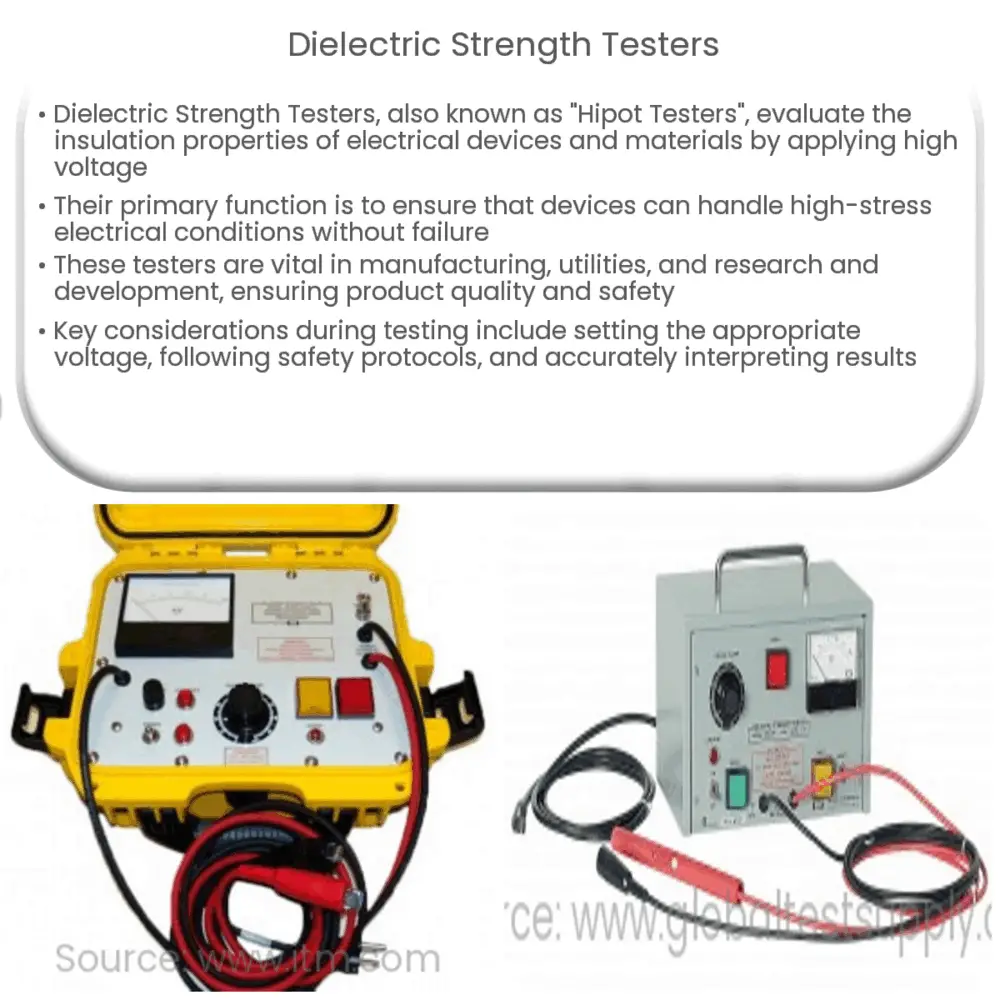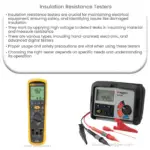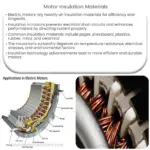Explore the role, working principle, applications, types, and key considerations of Dielectric Strength Testers in the electrical industry.

Introduction to Dielectric Strength Testers
A Dielectric Strength Tester, also commonly referred to as a “Hipot Tester,” is an indispensable instrument in the electrical and electronics industry. It is predominantly used to assess the dielectric strength or insulation properties of various electrical devices, components, and materials. The tester applies a significantly high voltage to the device under test, thus verifying its capability to handle high-stress electrical conditions without any failure or breakdown.
Working Principle
The fundamental principle behind the Dielectric Strength Tester is straightforward yet fascinating. It operates by applying a high voltage across the insulating material and monitoring the resulting current. The aim is to determine whether the insulation can withstand the applied voltage without experiencing a catastrophic failure, which in this context is often a breakdown of the insulation.
Applications and Industries
- Manufacturing: Dielectric Strength Testers are essential in the production process of electrical and electronic goods. They help in ensuring that products meet quality and safety standards.
- Utilities: These testers are also used in utilities to evaluate the insulation of transformers, circuit breakers, and cables. This helps to prevent failures that can lead to outages or safety hazards.
- Research and Development: In the field of R&D, these testers are used to assess new materials or improve the design of existing products.
Types of Dielectric Strength Tests
- Short-Time Test: Also known as the “flash test,” this method involves applying a high voltage for a specific, short duration. The item under test is observed for any signs of electrical discharge or failure.
- Withstand Test: Here, a high voltage is applied for a longer period, usually around a minute. This test determines whether the material or device can sustain a high voltage for an extended period.
- Breakdown Test: This test method involves increasing the voltage until the dielectric material or device breaks down. This helps determine the maximum voltage the device or material can withstand.
Regardless of the type of test conducted, the paramount concern is to confirm that the electrical devices, components, or insulating materials under test can resist high voltage conditions, thus ensuring safety and reliability.
Key Considerations for Dielectric Strength Testing
While dielectric strength testing is a crucial procedure in the electrical and electronics industry, there are certain critical considerations to take into account during the process. These considerations are meant to ensure accurate results and maintain the safety of the testing environment.
- Setting the correct voltage: It is vital to set the right voltage level for the test to avoid causing any unnecessary damage to the device or material being tested. Typically, the voltage level is set based on the specifications or standards applicable to the device or material.
- Observing safety precautions: Considering the high voltages involved in dielectric strength testing, it is paramount to observe all safety precautions. This includes using appropriate safety gear, keeping the testing area clear of any unnecessary equipment or materials, and ensuring the tester is properly grounded.
- Interpreting results: Being able to correctly interpret the results of a dielectric strength test is crucial. It requires understanding of the device or material under test, and the expected behavior under high voltage conditions.
Conclusion
In conclusion, Dielectric Strength Testers are a cornerstone in the electrical and electronics industry, playing an indispensable role in ensuring the safety, reliability, and quality of numerous devices and components. These testers, operating on the principle of applying high voltage to determine the insulating properties of materials, come with a plethora of applications – from manufacturing to research and development.
Given the high-stakes nature of these tests, utmost care must be taken in setting the correct parameters, following safety guidelines, and accurately interpreting the results. Despite the complexities involved, the immense value of dielectric strength testing in bolstering the integrity and dependability of electrical devices cannot be overstated.




